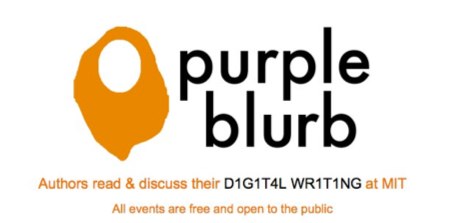Fedorova
Stacey Mason

Last night’s Purple Blurb event featured Russian video poet Natalia Fedorova, who gave a short lecture on the historical influences and motivations of Russian digital poetry before showing several video pieces. Her work has strong roots in futurist poetry, as well as other modern traditions of collage and montage. Music was heavily featured in most of the pieces, as was the remixing and repurposing of video clips.
The evening capped off with a promising Q&A session that fell just short of interesting debate. One question observed that avant-garde cinema had clearly been an important influence on “video poetry” and asked what, if anything, distinguished the two. Rather than the given answer (which spoke to the institutionalization of the form in shaping the nomenclature), the question evokes a deeper argument on why these digital works are considered “poetry,” with interesting implications on how we make such distinctions in ever-converging media. Most of the works featured had a particular emphasis on text or spoken language. There was also a clear focus on speech pattern and rhythm in relation to music, though in most cases the two were intentionally asynchronous. Such work forces us to rethink media as a spectrum rather than discrete forms.
Another questioner observed that much of the repurposed video shown in the work had come from diverse cinematic traditions. What significance does this suggest for video poetry as a whole? I think this also returns to the convergence of media. While it’s important to recognize the historical significance of such traditions, we must also keep in mind that in combining media, all the aspects that make up a work come from different traditions. This does not mean we can’t still talk about the work as a combined whole.
